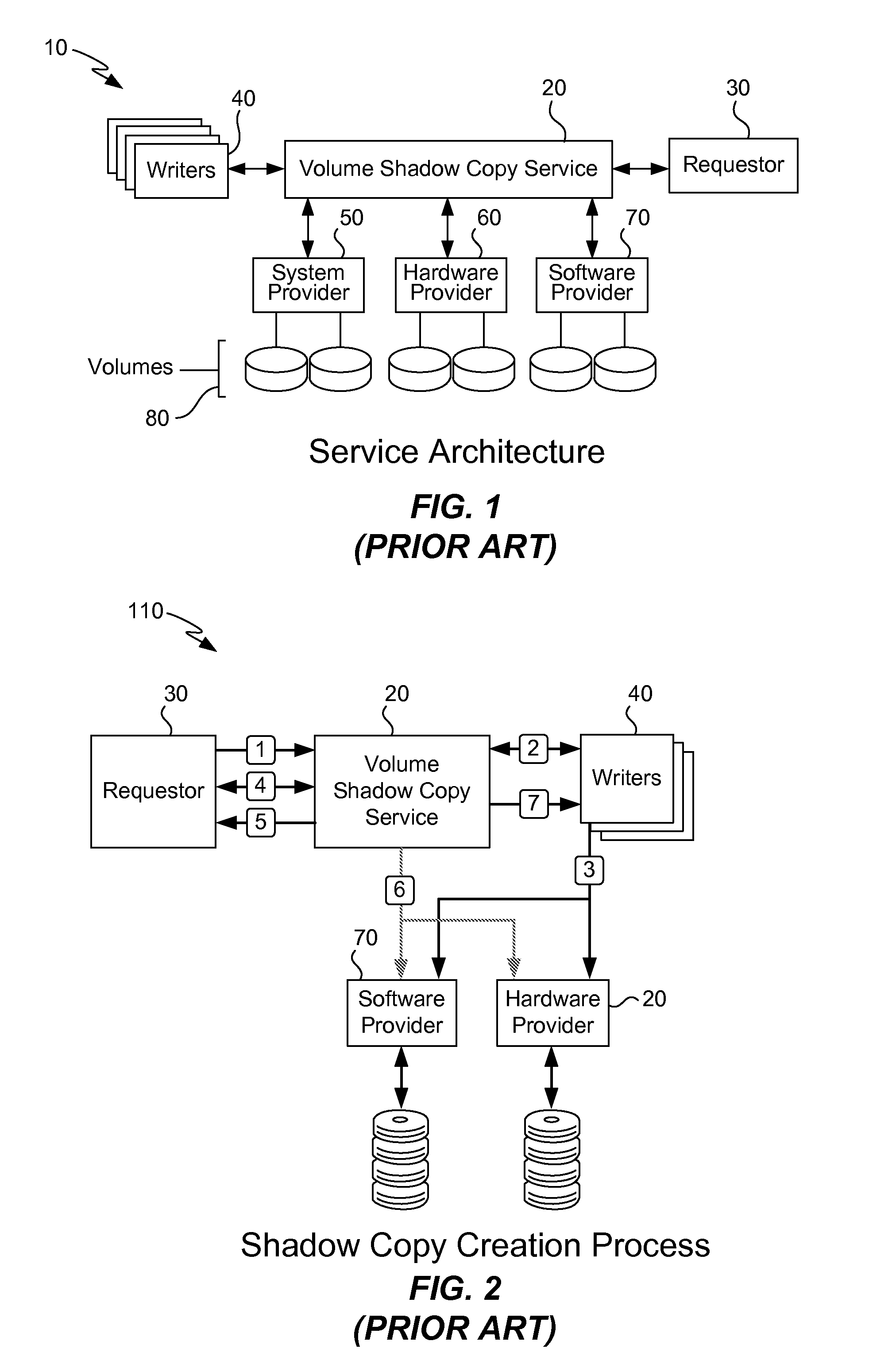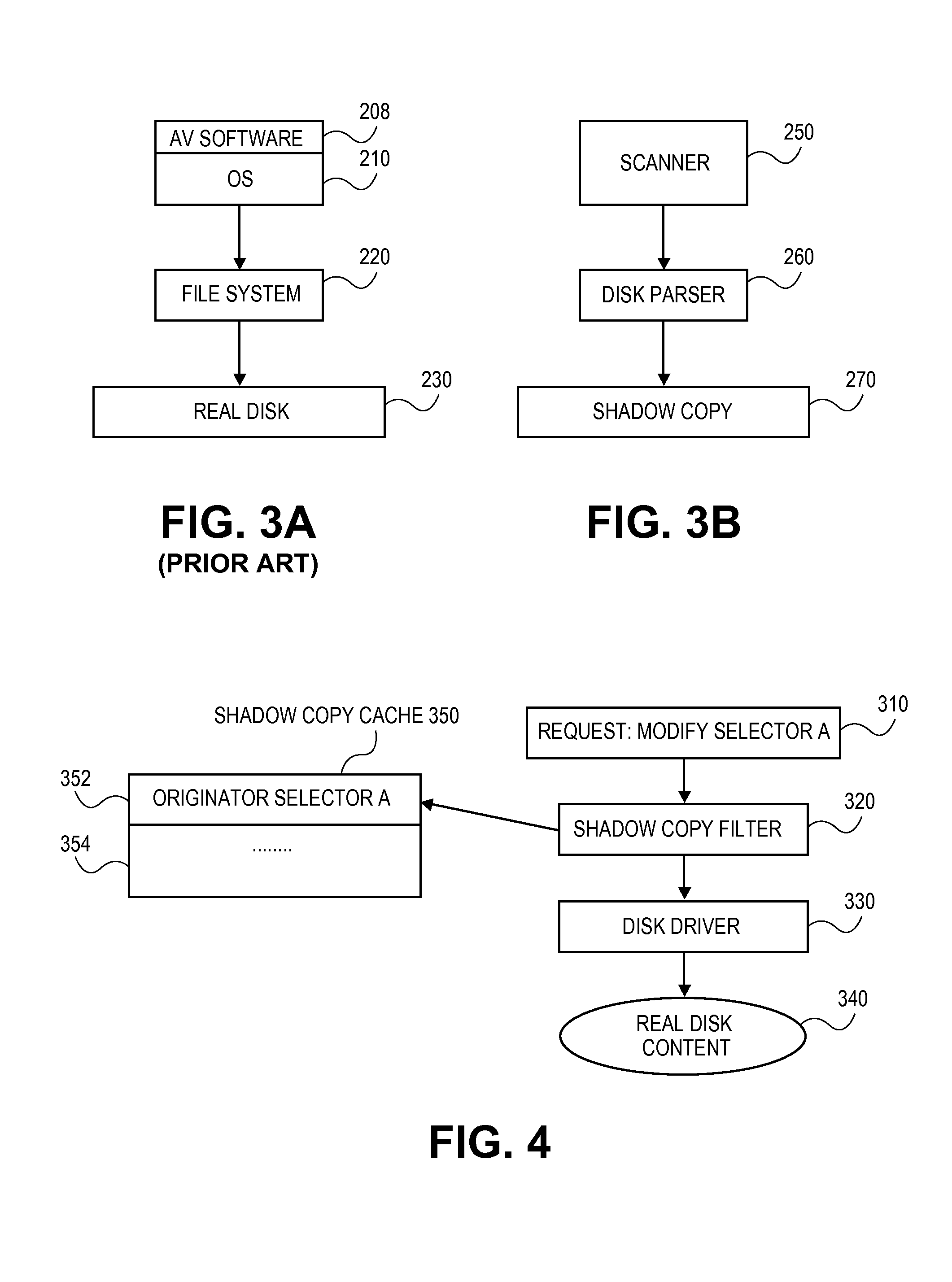Shadow copy-based malware scanning
a shadow copy and malware technology, applied in the field of detection of computer viruses, can solve the problems of ineffective scanning of files using shadow copy files, drawbacks in manual scanning (or scheduled scanning) of software files on disk using the api of the computer operating system, and computer viruses and other types of malware continue to plague computers and computer networks. to prevent watchdog malware from operating
- Summary
- Abstract
- Description
- Claims
- Application Information
AI Technical Summary
Benefits of technology
Problems solved by technology
Method used
Image
Examples
first embodiment
[0059]In either of the above two scenarios (original sector is clean, malware modifies a sector after the manual scan is begun), one embodiment of the invention contemplates that the modified sector on the hard disk will contain malware, and no cleaning will be performed because the original sector is clean. In these scenarios under a first embodiment, no action is taken in step 428 below because no cleaning was detected in step 420 below. The malware present in the modified sector will exist until the time that the next manual scan is performed. This embodiment may not be the most secure approach but will take less time to complete because not all sectors will be reverted. This embodiment acknowledges that scanning is periodical and that an infection may occur after a scan has begun.
second embodiment
[0060]In a second embodiment for the above two scenarios, the present invention contemplates that all sectors on the hard disk will be reverted to original sectors backed up in the cache. This embodiment would be the most secure approach, but will take more time to complete as all sectors present in the shadow copy cache must be reverted, even if no cleaning was performed upon them.
[0061]In step 416 malware is cleaned from the sectors of the shadow copy that include malware. Because the shadow copy at the beginning of the scan is only the hard disk itself, cleaning of a sector from the shadow copy cache only occurs if that sector is modified by malware after scanning of the hard disk has begun but before that particular is scanned. Any such sector of the cache that had also been infected by malware before the beginning of the scan would also have that malware removed by the cleaning.
[0062]Any suitable antivirus cleaning software may be used for this purpose. Conceptually, the shadow...
PUM
 Login to View More
Login to View More Abstract
Description
Claims
Application Information
 Login to View More
Login to View More - R&D
- Intellectual Property
- Life Sciences
- Materials
- Tech Scout
- Unparalleled Data Quality
- Higher Quality Content
- 60% Fewer Hallucinations
Browse by: Latest US Patents, China's latest patents, Technical Efficacy Thesaurus, Application Domain, Technology Topic, Popular Technical Reports.
© 2025 PatSnap. All rights reserved.Legal|Privacy policy|Modern Slavery Act Transparency Statement|Sitemap|About US| Contact US: help@patsnap.com



